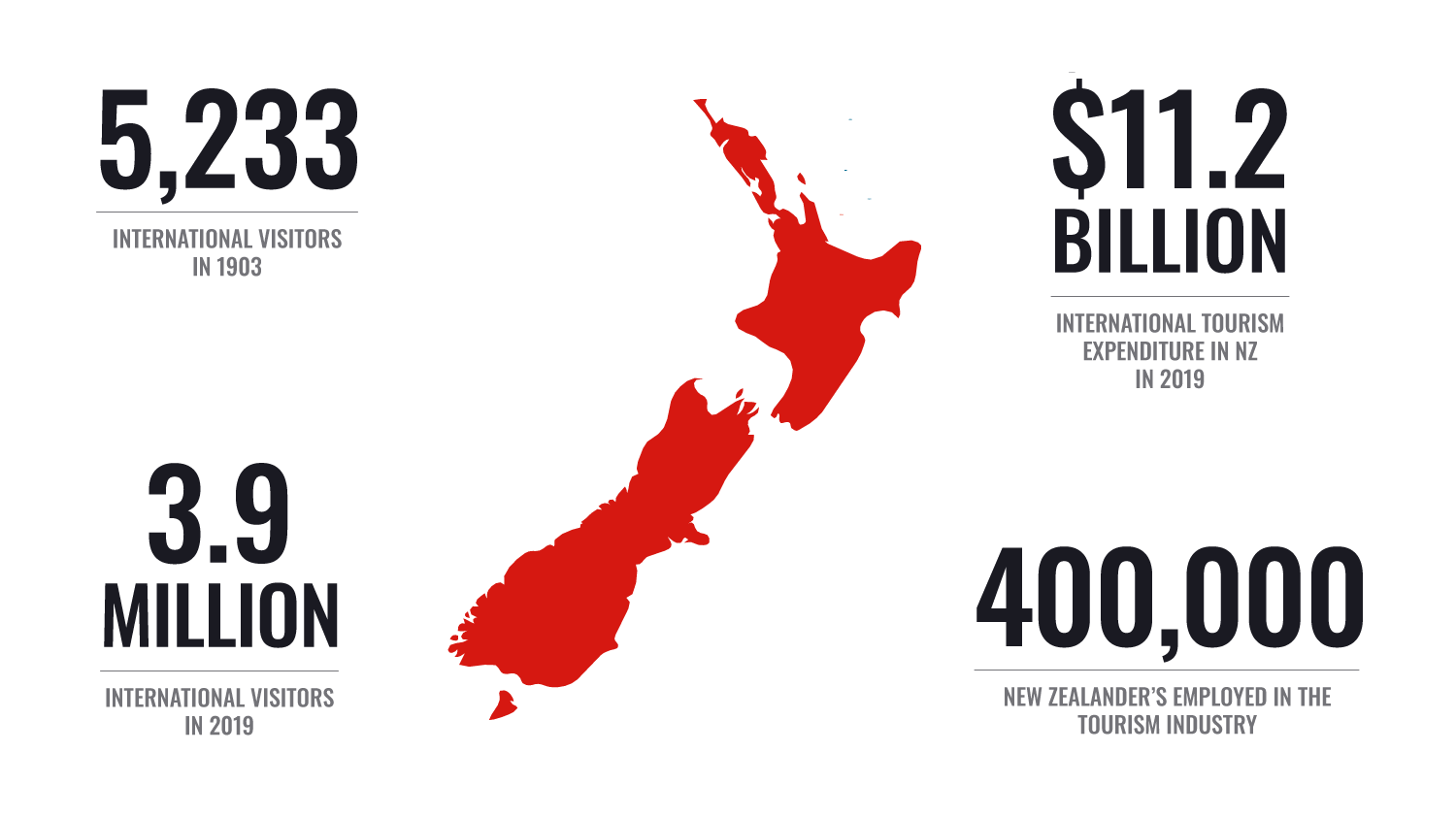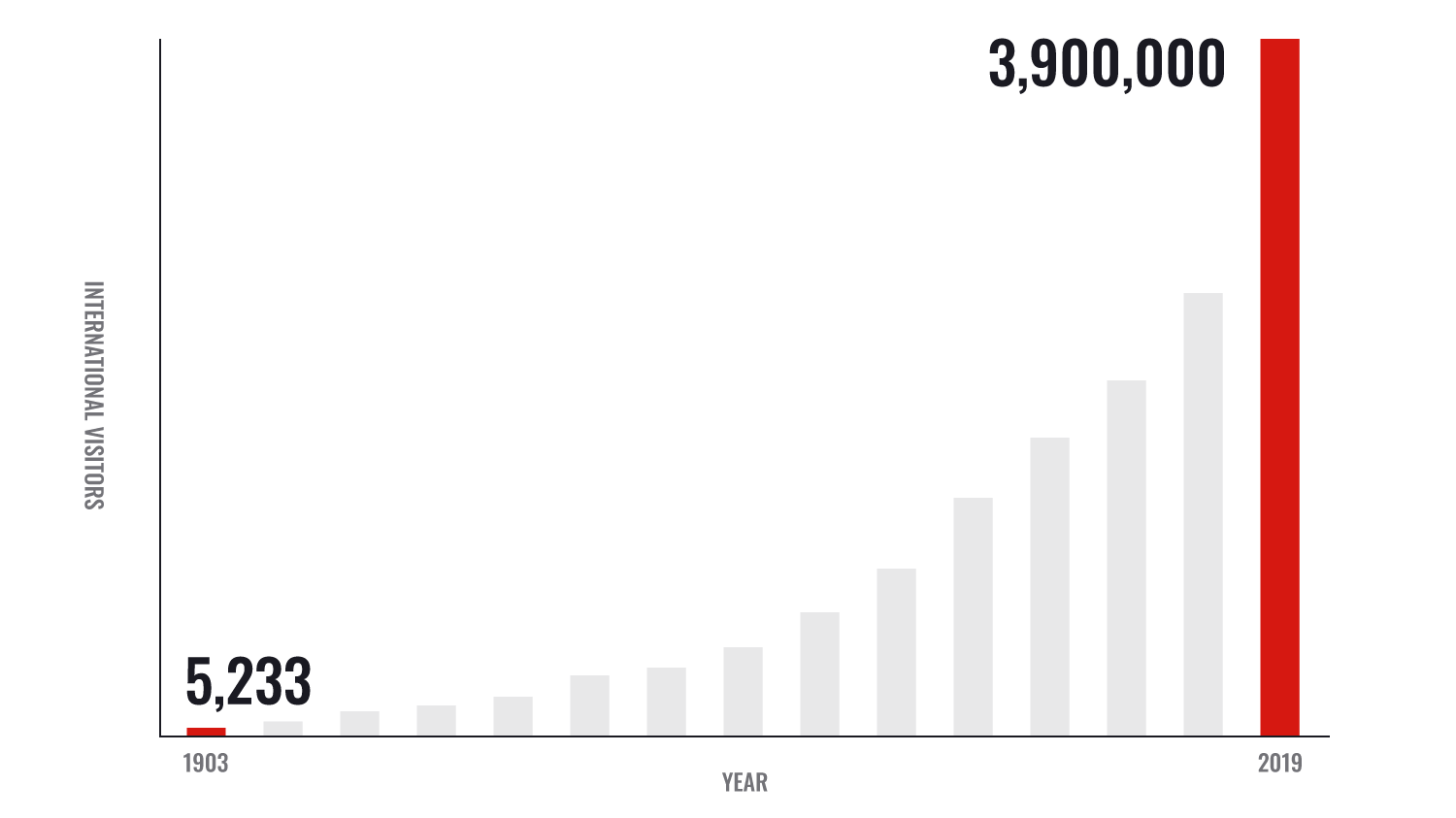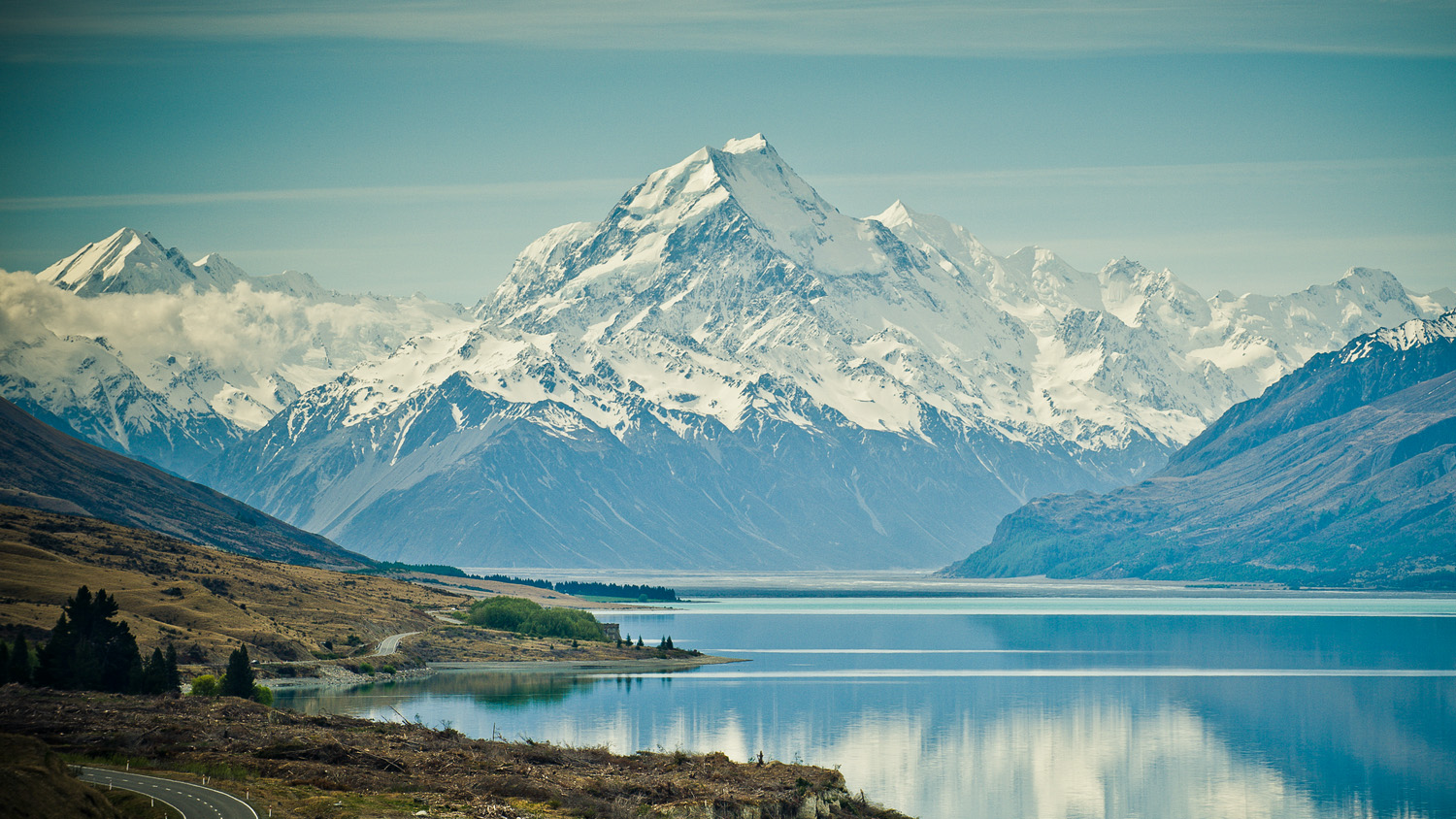New Zealand's global marketing body, Tourism New Zealand, is almost 120 years old. Set up on 1 February 1901, the Department of Tourist and Health Resorts was the first government department in the world created specifically to develop the business of tourism.
Just 120 years ago, when tourism was a fledgling industry, Sir Joseph Ward who was our Prime Minister at the time, had the foresight to recognise the potential benefits to our country and create the department," he says. "His legacy lives on in the ever-increasing numbers of international visitors that are attracted to our country today.


First recorded figures show 5233 visitors in 1903, while the latest annual figures for April 2019 show almost 3.9 million visitors. (source: stats.govt.nz) New Zealand has also reaped the financial benefits of a foresighted government, with today's tourism industry one of its largest foreign exchange earners - in June 2019, foreign exchange earnings reached $11.19 billion. (Ministry of Business, Innovation & Employment, 2019) It is estimated that 399,150 people are directly and indirectly employed in tourism in - 14.5% of the total number of people employed in New Zealand. (Tourism Industry Aotearoa 2018) Today, tourism is New Zealand’s biggest export earner!
Tourism in New Zealand dates back to the 1840s with the Pink and White Terraces of Lake Rotomahana (destroyed 1886). It was the Maori and early settlers who first took advantage of our natural resource by soaking in our very own mineral waters.
The development of the first thermal springs at Waiwera, (north-west of Auckland), and promotion of Rotorua's thermal waters, as well as Hanmer Springs, was attracting locals and tourists alike by the early 1900s
Another early tourism development was the overland route from Te Anau to Milford Sound. Milford Sound was discovered in the early 1820s. By 1880 the Milford track was formed. Early recordings show 40 track walkers in 1888-1889 and 100 the following year. Over 14,000 people now walk this 53.5 km track each year.

New Zealand’s majestic peak, Aoraki /Mount Cook (above) is also an early source of publicity, attracting climbers as early as 1882. From 1884 early tourists could take guided trips to the glaciers and admire views while staying at the Hermitage Hotel. Skiing the glaciers was introduced in 1915.
The TSS Earnslaw has been cruising Lake Wakatipu, in Queenstown since 1912. Initially, it serviced Kingston and Glenorchy offering a passenger and freight service.
When roads to Queenstown were established, the need for this service dwindled and the ship was leased out to Fiordland Travel who offered scenic cruises on the lake. Even after over a century, the TSS Earnslaw still does regular 14-hour summer days and steams through 11 months of the year. Locate Lake Wakatipu on the NZ Map.

Tourism at the Waitomo Glowworm caves (right) began in 1888. The first visitors were taken by local Maori guides in canoes. They would go on shore inside the cave and be guided on ladders through the caves and let out through an opening 50 feet above the river. Early records show that 360 visitors visited between June 1889 and Dec 1890.
Literary giants such as George Bernard Shaw, Rudyard Kipling, Mark Twain and Anthony Trollope were arriving as early as 1860 to seek inspiration from the new colony. Today, Kiwi inventions like the 1950’s jet boat, ski plane, and popularisation of the bungy in the 1980s, have added adventure and action to our landscape and cultural attractions.
The creation of the Department of Tourist and Health Resorts in 1901 recognised the Government's early commitment to developing a tourism industry in New Zealand.
The department was set up to provide improved facilities for visitors and to encourage international visitors. This included further developing, managing and establishing facilities and access, the promotion of New Zealand overseas and provision of a booking service/itinerary planning for visitors (nationwide and overseas). By 1903 there were six regional offices, with a head office in Wellington (where it has remained). By 1910 there were honorary agents in London, USA, Canada and South Africa, and official offices in Australia. Today, Tourism New Zealand has 13 offshore offices and three general sales representatives in a total of 12 countries, employing 160 staff.
In 1954 the department was renamed the Tourist and Publicity Department, in 1990 the New Zealand Tourism Department, in 1991 it was replaced by the New Zealand Tourism Board and in 1999 it was renamed Tourism New Zealand.
